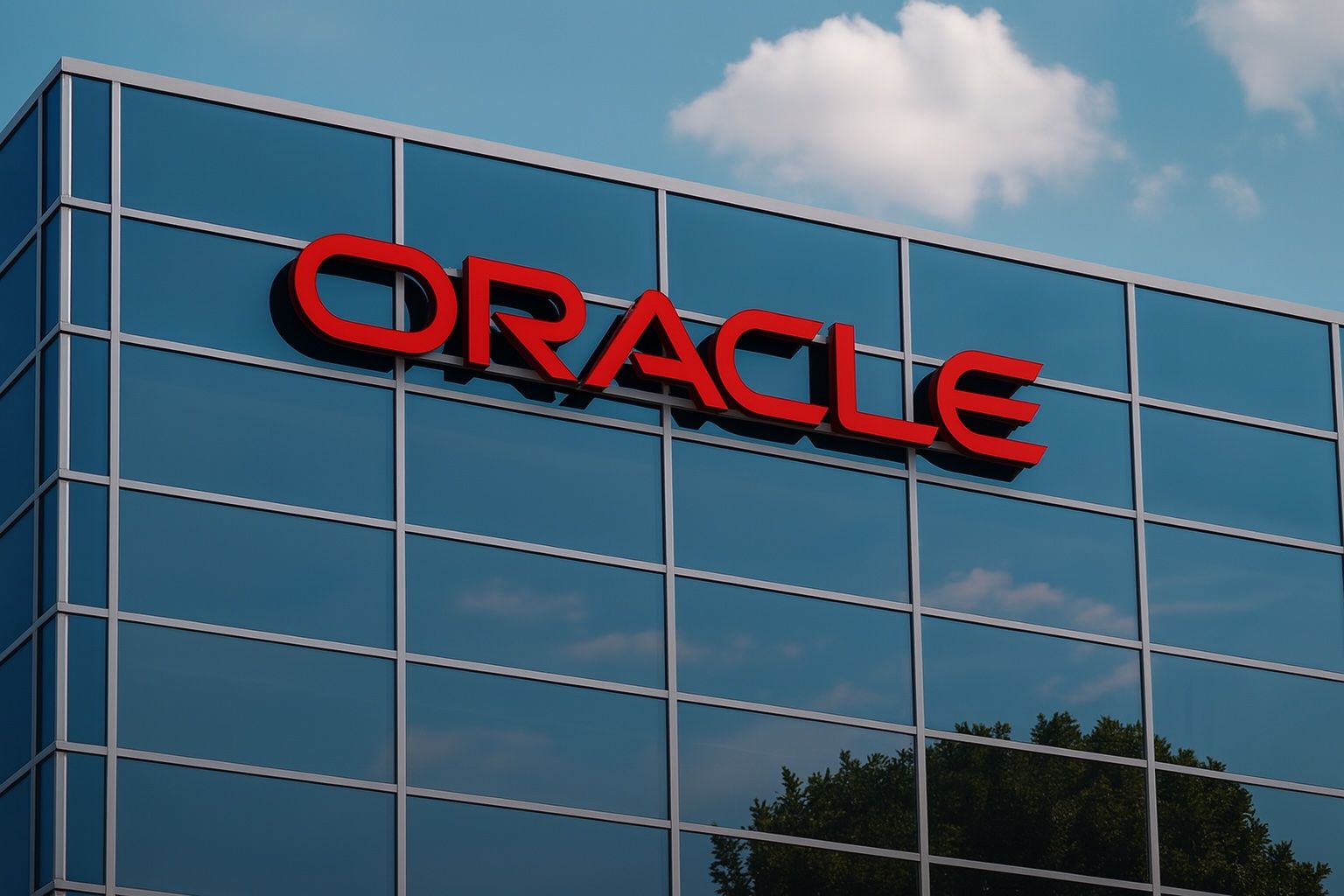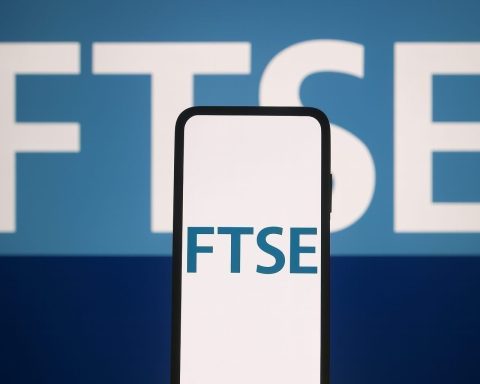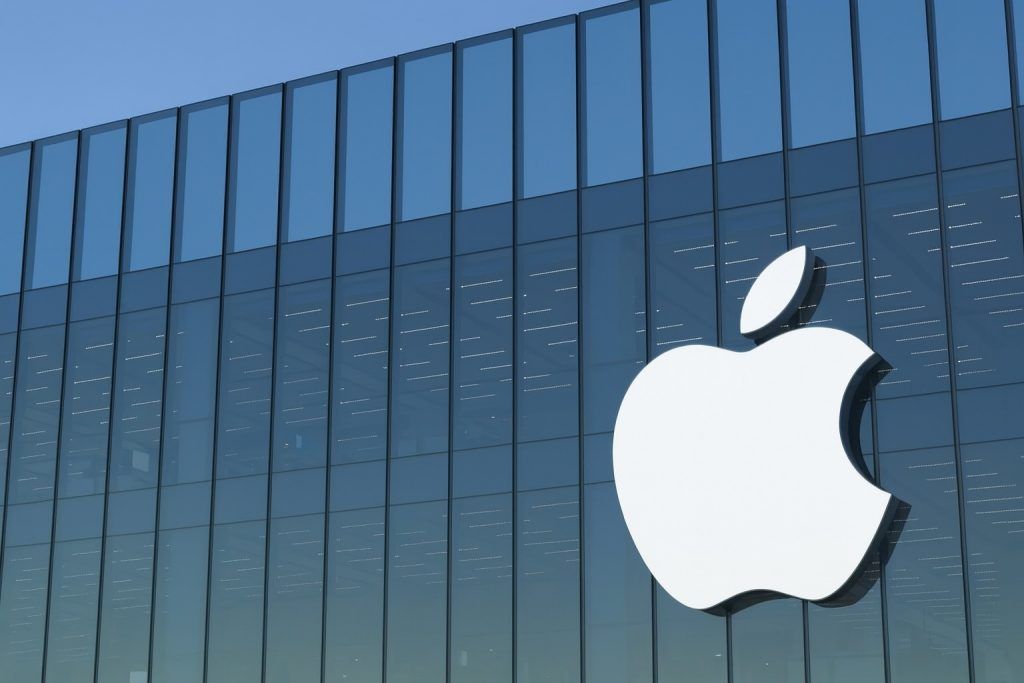- Oracle (NYSE: ORCL) shares closed at $285.72 on Oct. 24, 2025 [1], rebounding after mid-October dips; the stock is up roughly 70–75% year-to-date [2] [3].
- The rally has been driven by major AI/cloud deals – notably a reported $300 billion five-year OpenAI cloud contract and a $65 billion infrastructure pact with Meta [4]. These deals have catapulted Oracle’s cloud backlog (RPO) to about $455 billion [5] [6].
- ORCL stock has seen wild swings: it spiked over +36% in one day (Sept. 10, 2025) on the blockbuster AI deal news [7], then gave back some gains on profit-taking – falling ~7% on Oct. 17 [8] [9]. Even after this pullback, Oracle remains one of the year’s top tech performers, far outpacing peers like Microsoft and Google [10] [11].
- Analysts have raised targets and ratings on Oracle amid the AI excitement. For example, Jefferies called Oracle’s last AI quarter “truly historic” and set a $360 price target [12], while ScotiaBank and William Blair issued new “Outperform” ratings (with targets ~$360) [13]. The consensus 12-month target is in the $300–$324 range [14]. Some caution that the stock’s valuation (now ~45–60× earnings [15]) hinges on hitting these aggressive growth goals.
- In its recent earnings, Oracle (Q1 FY2026 ended Aug. 31) reported $14.93 billion in revenue (+12% YoY) [16]. Cloud sales (SaaS+IaaS) jumped 28% to $7.2B [17]. EPS was roughly flat ($1.47 non-GAAP, a $0.01 miss) [18]. The company declared a $0.50 quarterly dividend (annual yield ~0.7%) [19].
- Management’s outlook is highly ambitious: Oracle now projects total revenue reaching $225 billion by FY2030, with cloud infrastructure making up ~$166B of that [20]. CFO Doug Kehring said the newest bookings are “coming in from a range of customers, not just OpenAI” [21] [22]. Oracle’s long-term targets imply ~75% annual cloud growth to 2030 [23].
Stock Price & Recent Trading
Oracle’s stock price has been volatile but trending up. On Oct. 24, 2025, ORCL traded in the $282.80–$287.19 range and closed at $285.72 (up 2% on the day) [24]. Volume was heavy (~1.95 million shares) [25]. This follows a mid-October swing: a sharp selloff on Oct. 22 ($269.25 low) was quickly bought back, with the stock rebounding to close $281.31 on Oct. 23 [26]. Technical data show ORCL bouncing off its 50-day moving average near $274, though still below the 20-day mean (~$289) [27].
The stock’s year-to-date rise is dramatic: ORCL hit a record ~$345 intraday in early September 2025 [28], up roughly +75% from January levels [29] [30]. That peak came after news of multi-hundred-billion-dollar AI contracts. After profit-taking, ORCL pulled back to the high-$200s, but even at ~$285 it is well above its year-ago price (~$168) [31] [32]. Tech analysts note this surge “left even the ‘Magnificent Seven’ tech stocks trailing” in 2025 [33].
In recent days, broader market swings have amplified Oracle’s moves. An Oct. 13 rebound in tech shares (on easing U.S.-China trade fears) helped ORCL jump +5.4% that day [34], as Oracle announced partnerships with Zoom and Duality to expand its cloud offerings [35]. Conversely, on Oct. 17 (following Oracle’s AI World forecasts), investors “took profits,” sending ORCL down roughly 6.9% [36]. The Nasdaq reports that ORCL’s stock “has seen 22 moves above 5% in the past year” [37], underlining its volatility.
Major Developments Driving Oracle
Oracle is in the spotlight for its AI and cloud strategy. At the recent Oracle AI World conference (Oct 15–16, 2025), the company rolled out numerous new products and deals. It unveiled the Oracle AI Data Platform – an integrated toolkit to connect customers’ data with leading generative AI models and automate workflows [38]. EVP T.K. Anand called it “the most comprehensive foundation for enterprises seeking to harness the power of AI” [39]. Oracle also introduced AI agents for its Fusion Cloud apps [40], embedding generative AI assistants into ERP, HR, supply chain and CRM systems. As Steve Miranda (Oracle EVP) explained, these agents let organizations “fast-track AI adoption” and “work smarter, drive efficiency, and grow with confidence” [41].
Infrastructure upgrades are another theme. Oracle announced an OCI Zettascale10 supercomputing network linking up to 800,000 NVIDIA GPUs across data centers [42], billed as one of the world’s largest AI supercomputers. It also partnered with AMD to deploy 50,000 AMD Instinct MI450 GPUs on Oracle Cloud by late 2026 [43] [44]. In product previews, Larry Ellison hinted at an “Oracle AI Database” service to run customers’ own LLMs on top of Oracle DB. Oracle has also expanded its multi-cloud approach: it launched Universal Credits allowing clients to run Oracle’s database and cloud services on AWS, Azure or Google Cloud using a single contract [45]. This cross-cloud strategy drew praise (IDC dubbed it “jet fuel” for adoption) and led to a 1,529% surge in revenue from multi-cloud customers in Q1 [46] [47].
Outside the private sector, Oracle scored big deals with governments. For example, the UK Home Office agreed to a new £54 million (≈$72M) five-year Oracle cloud contract [48]. In the U.S., Oracle is now the secure cloud partner for TikTok under a “OneGov” federal initiative [49], which could add an estimated $1–2 billion in annual revenue as TikTok’s U.S. operations move onto OCI. These contracts underscore Oracle’s push to win market share by offering highly discounted pricing (Oracle disclosed 75% discounts for certain federal agencies) [50].
On the management side, Oracle announced a leadership shake-up on Sept. 22: longtime CEO Safra Catz will become Vice Chair, and two cloud veterans – Clay Magouyrk (current OCI chief) and Mike Sicilia (Fusion Apps head) – will serve as co-CEOs [51] [52]. Founder Larry Ellison remains Executive Chair/CTO to guide product strategy. Wall Street greeted the transition positively: Evercore noted that investors are “already familiar” with Magouyrk and Sicilia, and that their promotion “solidify[ies] the importance of the Cloud and Industry businesses” [53] [54]. In a sign of confidence, Oracle quickly reiterated its ambitious financial targets even as it announced the changes.
Analyst Commentary & Outlook
Analysts are largely bullish on Oracle’s prospects, albeit at very high expectations. Many have upped their price targets: for example, Jefferies sees ORCL reaching $360 (reflecting the “historic” AI quarter) [55]. MarketBeat notes at least 3 firms rating ORCL “Strong Buy” and 27 as “Buy”, with a consensus target around $324 [56]. In recent research, BMO Capital reaffirmed an “Outperform” rating with a $355 target, and Scotiabank lifted its target to $360 [57]. Even Morgan Stanley and UBS have targets above $300 [58].
However, some experts urge caution. Oracle now trades at a lofty multiple (~45–60× 2025 earnings [59]), and one watchdog analyst (Redburn) warned that the massive OpenAI deal is “very risky” – issuing a Sell rating with a $175 target [60]. Concerns include whether Oracle can sustain profit margins on these deals and whether growth can actually match Wall Street’s lofty forecasts. CNBC and Bloomberg note that Oracle’s expected cloud margins (30–40%) are lower than its legacy business, raising questions about future profitability [61] [62]. Indeed, ORCL dipped after such reports.
Still, sentiment is generally positive. Analysts praise Oracle’s transformation into an AI and cloud leader [63]. Jefferies called the recent AI quarter “truly historic” [64]. Many forecasts now assume Oracle will capture a sizable chunk of the booming enterprise AI market. As one tech-researcher put it, Oracle is now in a “new growth phase” driven by cloud and AI [65]. The average analyst on MarketBeat still rates ORCL a moderate buy [66].
(TechStock² (ts2.tech) has been covering these developments closely. One ts2 report dubbed Oracle’s deals and AI launches an “AI Cloud Blitz,” detailing the OpenAI and Meta contracts and the new supercomputer [67]. Another noted ORCL’s year-to-date surge and warned of the sharp pullback after profit-taking [68] [69].)
Recent Earnings & Financial Outlook
Oracle’s latest quarterly results and guidance reflect both growth and caution. For Q1 FY2026 (ended Aug. 31, 2025), Oracle reported $14.93 billion in total revenue, up 12% year-over-year [70]. Cloud services (SaaS + IaaS) accounted for $7.2B, a +28% increase [71]. Non-GAAP earnings were $1.47 per share (flat to up slightly) [72], narrowly missing estimates. The company paid a $0.50 dividend on Oct. 23 (annualized ~$2.00) [73].
A key highlight was the massive AI contract backlog: Oracle announced it had signed four multi-billion-dollar AI cloud deals across three customers in that quarter [74]. These deals – including one reportedly with OpenAI – rocketed Oracle’s remaining performance obligations to $455B, a 359% jump year-over-year [75] [76]. CEO Safra Catz said further multi-billion deals are imminent, forecasting RPO “likely to exceed half-a-trillion dollars” soon [77] [78]. In short, Oracle’s sales pipeline is at an all-time high.
Oracle has also updated its quarterly guidance. In mid-September it set FY2026 Q2 EPS at $1.27–1.31, slightly below the Wall Street consensus of $1.35 [79]. This guidance, along with the timing of revenue recognition on large deals, explains part of the recent volatility. Looking further ahead, Oracle gave an aggressive long-range plan: CFO Doug Kehring told analysts that by FY2030 Oracle aims for $225 billion in revenue and ~$21 in EPS [80]. That implies Oracle becoming an $800–900 billion company in a few years, joining the ranks of the world’s largest tech giants.
In response to this news, ORCL stock initially rose. Reuters reported that shares jumped +3% on Oct. 16 after the cloud guidance, before sliding back the next day [81] [82]. Overall, ORCL finished that week sharply higher – even after the profit-taking drop – and on Oct. 23 it closed at about $291.45 [83].
Oracle’s Cloud & AI Expansion
Underpinning the stock rally are concrete business moves. Oracle is fast-tracking its cloud and AI portfolio. For developers and enterprise clients, the new Oracle AI Data Platform (announced Oct. 14) offers a unified way to prepare data and deploy generative AI models securely [84]. Oracle points out that this platform integrates its Autonomous Database, OCI Gen AI service, and NVIDIA-accelerated compute, enabling businesses to build production AI apps more easily [85] [86].
On the applications side, Oracle is embedding AI broadly. The Fusion Cloud Applications now include dozens of AI “agents” for workflows – for example, an AI assistant to automate invoicing in finance, or one to help managers with HR decisions [87]. Steve Miranda, EVP of applications development, said these agents will let customers “re-architect their finance, HR, supply chain, and customer experience operations” for efficiency [88]. Notably, IBM has already built several AI agents on Oracle’s platform, and SoftBank and others are collaborating on cloud/AI ventures, underscoring third-party support for Oracle’s approach.
Technologically, Oracle is beefing up its infrastructure with the latest chips. As reported by CIO Dive, Oracle partnered with AMD and Nvidia to deploy advanced GPUs on OCI [89]. The 50,000 AMD MI450 GPUs (starting Q3 2026) and the new Zettascale10 fabric of Nvidia GPUs will power Oracle’s so-called “Stargate” AI supercluster for OpenAI [90]. This move is positioning OCI to handle hyperscale AI workloads on par with Amazon/Azure/Google.
Meanwhile, Oracle’s database franchise is leveraging AI as well. At AI World, Ellison previewed an “AI Database” service that will let any LLM (OpenAI’s, Google’s Gemini, etc.) query Oracle data directly [91]. And importantly, Oracle continues to embrace multi-cloud: it now lets AWS and Azure customers run Oracle databases on those clouds natively, and it offers credits to use Oracle tech across other clouds [92]. This multi-cloud openness has driven a surge (1,529%) in revenue from customers running OCI on competing clouds [93].
In summary, Oracle has transformed from a legacy software company into a cloud/AI powerhouse. It’s making waves with aggressive capex (data centers, chips) and a strategy of open partnerships. As a result, Oracle’s growth story is shifting: profits have taken a back seat to rapid expansion. Management repeatedly stresses that they’re accepting slimmer margins now to capture massive future revenue. This thesis is now being tested in the market: investors have rewarded the ambition with a huge stock runup, but they are closely watching execution and profitability going forward.
Market and Industry Reaction
The financial markets have reacted strongly to Oracle’s narrative. Equity investors are bullish enough that ORCL traded near $300 in mid-October [94], and many money managers remain overweight. Hedge funds and institutions now own around 42% of Oracle’s float [95], indicating significant interest. Short interest is minimal – fewer than 1% of shares are sold short – reflecting broad confidence rather than outright skepticism.
News outlets and analysts are devoting space to Oracle’s run. Tech and financial press have compared ORCL’s trajectory to Nvidia’s AI boom, but note key differences (Oracle has no GPU IP, and depends on a few big customers) [96] [97]. CNBC covered Oracle as a leading AI stock, while Bloomberg and Reuters have given front-page coverage to its forecasts. Notably, some mainstream pieces have highlighted the recent volatility: e.g., Nasdaq’s Marketbeat wrote that ORCL “dips while market gains” and detailed the stock’s swings [98] [99].
Meanwhile, the broader tech industry is watching. Oracle’s moves – especially the chip partnerships and AI agents – reflect industry trends of open ecosystems and enterprise AI adoption. For example, the fact that Oracle is integrating with AWS/Azure/Google, and even partnering with former rivals, is often cited as unique in the cloud space. On the chip side, Oracle is betting on both AMD and Nvidia, giving it a strategic advantage (as Forrester notes) over competitors who may favor one vendor [100].
Ts2.Tech coverage underscores the hype cycle. One TechStock² article noted that Oracle’s $300B AI announcement “sent it within sight of the elite trillion-dollar club” before profit-taking pulled it back [101]. The same report emphasized that ORCL’s valuations are now stratospheric, albeit based on delivering “spectacular growth” [102] [103]. Another ts2 story highlighted that ORCL’s stock was “hovering in the high-$270s on Oct. 21” after the pullback [104], reflecting the recent market turbulence.
Overall, market sentiment is optimistic but cautious. Most analysts say Oracle can achieve these goals, but warn that execution risk is real. As one analyst put it, the stock’s future now hinges on whether Oracle can turn its enormous contract backlog and cloud infrastructure into sustained high growth and eventually healthy margins [105] [106].
Sources: Oracle investor relations releases [107] [108] [109]; Reuters and Bloomberg reports [110] [111]; Market analytics (MarketBeat, Nasdaq) [112] [113]; Ts2.Tech analysis [114] [115] [116]; Financial news outlets (CNBC, Economic Times) [117] [118].
References
1. economictimes.indiatimes.com, 2. ts2.tech, 3. ts2.tech, 4. ts2.tech, 5. ts2.tech, 6. ts2.tech, 7. ts2.tech, 8. www.nasdaq.com, 9. ts2.tech, 10. ts2.tech, 11. ts2.tech, 12. ts2.tech, 13. www.marketbeat.com, 14. www.marketbeat.com, 15. ts2.tech, 16. investor.oracle.com, 17. investor.oracle.com, 18. www.marketbeat.com, 19. www.marketbeat.com, 20. www.reuters.com, 21. www.reuters.com, 22. www.reuters.com, 23. www.reuters.com, 24. economictimes.indiatimes.com, 25. economictimes.indiatimes.com, 26. historicaloptiondata.com, 27. historicaloptiondata.com, 28. ts2.tech, 29. ts2.tech, 30. ts2.tech, 31. ts2.tech, 32. ts2.tech, 33. ts2.tech, 34. www.indexbox.io, 35. www.indexbox.io, 36. www.nasdaq.com, 37. www.nasdaq.com, 38. www.oracle.com, 39. www.oracle.com, 40. www.oracle.com, 41. www.oracle.com, 42. ts2.tech, 43. ts2.tech, 44. www.ciodive.com, 45. ts2.tech, 46. ts2.tech, 47. ts2.tech, 48. ts2.tech, 49. ts2.tech, 50. ts2.tech, 51. ts2.tech, 52. ts2.tech, 53. ts2.tech, 54. ts2.tech, 55. ts2.tech, 56. www.marketbeat.com, 57. www.marketbeat.com, 58. www.marketbeat.com, 59. ts2.tech, 60. ts2.tech, 61. www.reuters.com, 62. www.nasdaq.com, 63. ts2.tech, 64. ts2.tech, 65. ts2.tech, 66. www.marketbeat.com, 67. ts2.tech, 68. ts2.tech, 69. ts2.tech, 70. investor.oracle.com, 71. investor.oracle.com, 72. investor.oracle.com, 73. www.marketbeat.com, 74. ts2.tech, 75. ts2.tech, 76. ts2.tech, 77. investor.oracle.com, 78. ts2.tech, 79. www.marketbeat.com, 80. www.reuters.com, 81. www.reuters.com, 82. www.nasdaq.com, 83. www.nasdaq.com, 84. www.oracle.com, 85. www.oracle.com, 86. www.oracle.com, 87. www.oracle.com, 88. www.oracle.com, 89. www.ciodive.com, 90. www.ciodive.com, 91. investor.oracle.com, 92. ts2.tech, 93. ts2.tech, 94. ts2.tech, 95. www.marketbeat.com, 96. ts2.tech, 97. ts2.tech, 98. ts2.tech, 99. www.nasdaq.com, 100. www.ciodive.com, 101. ts2.tech, 102. ts2.tech, 103. ts2.tech, 104. ts2.tech, 105. www.reuters.com, 106. ts2.tech, 107. investor.oracle.com, 108. www.oracle.com, 109. www.oracle.com, 110. www.reuters.com, 111. www.nasdaq.com, 112. www.marketbeat.com, 113. www.nasdaq.com, 114. ts2.tech, 115. ts2.tech, 116. ts2.tech, 117. economictimes.indiatimes.com, 118. historicaloptiondata.com







